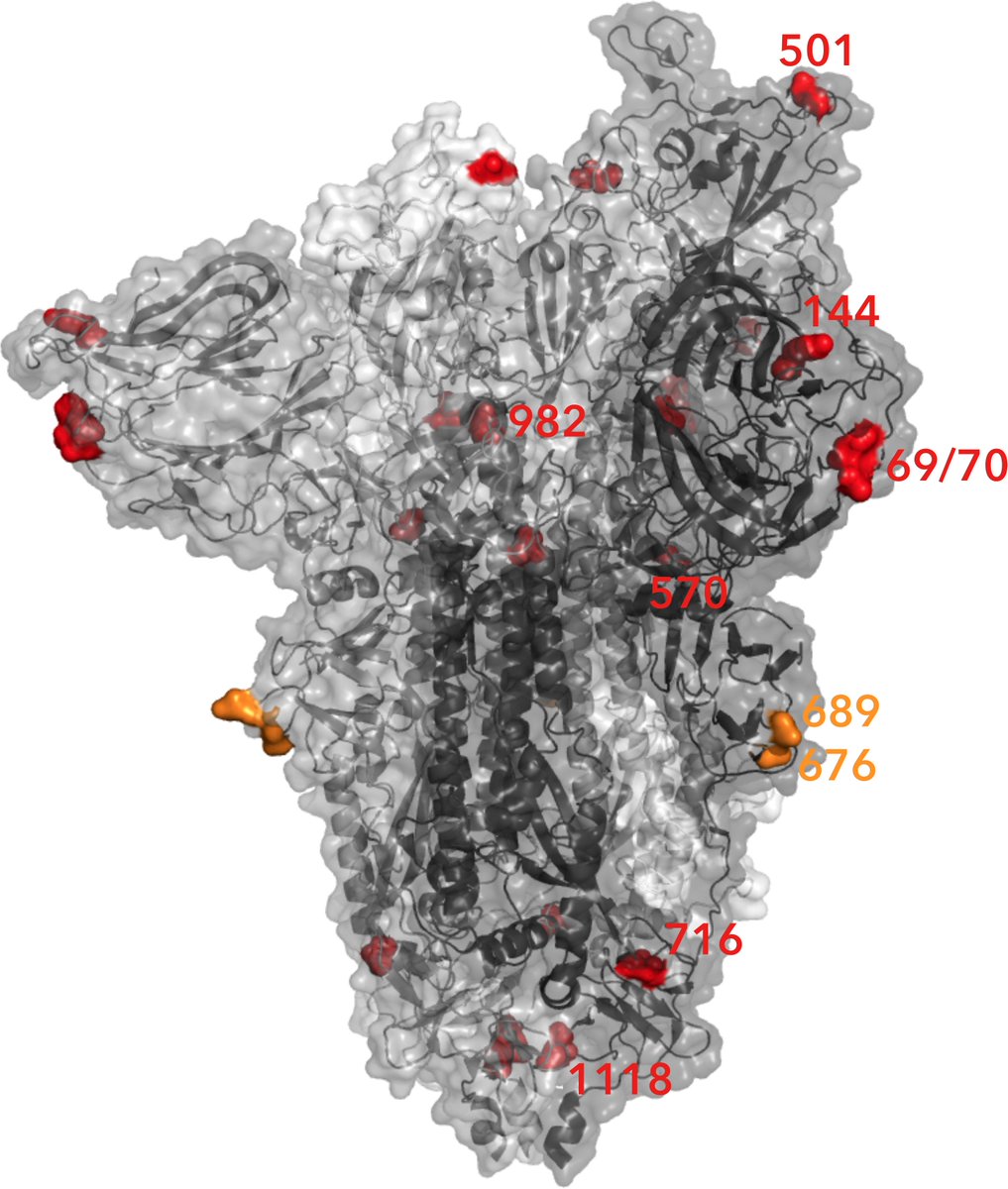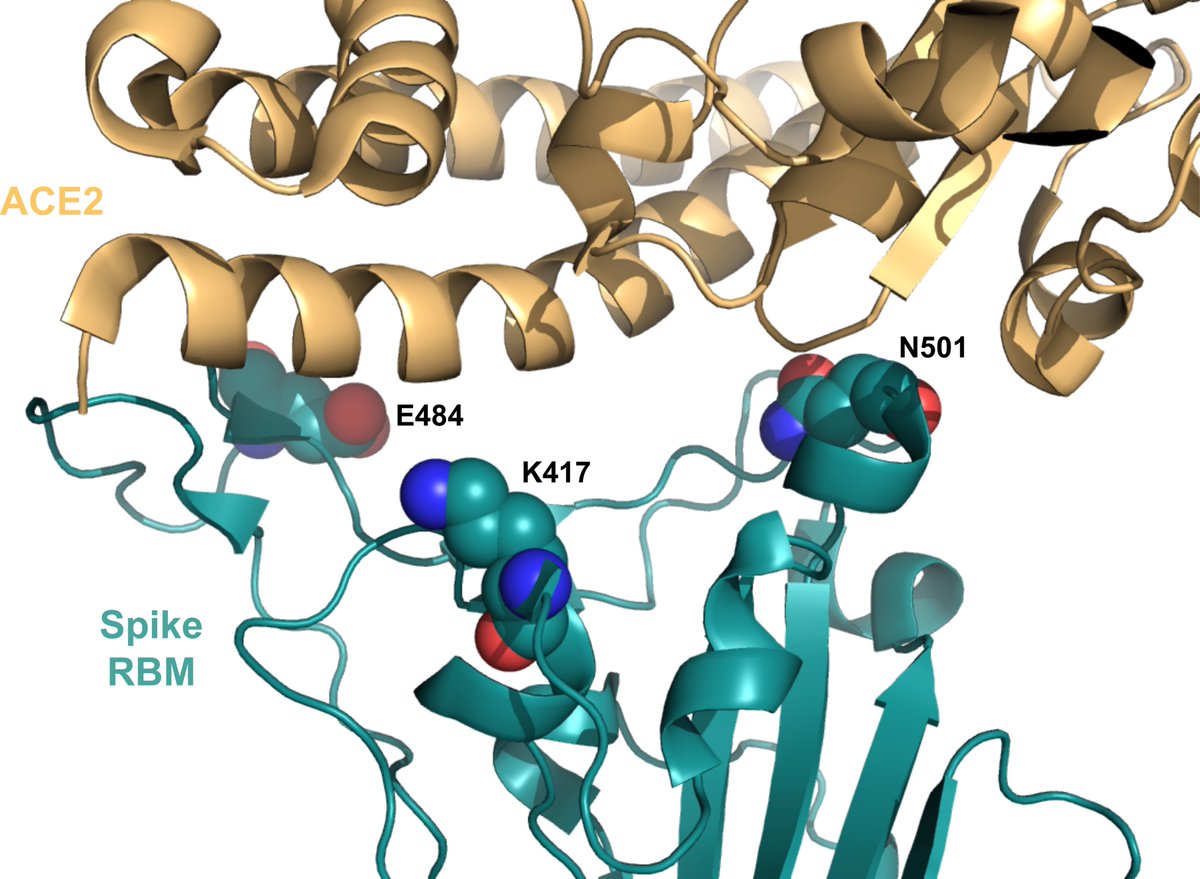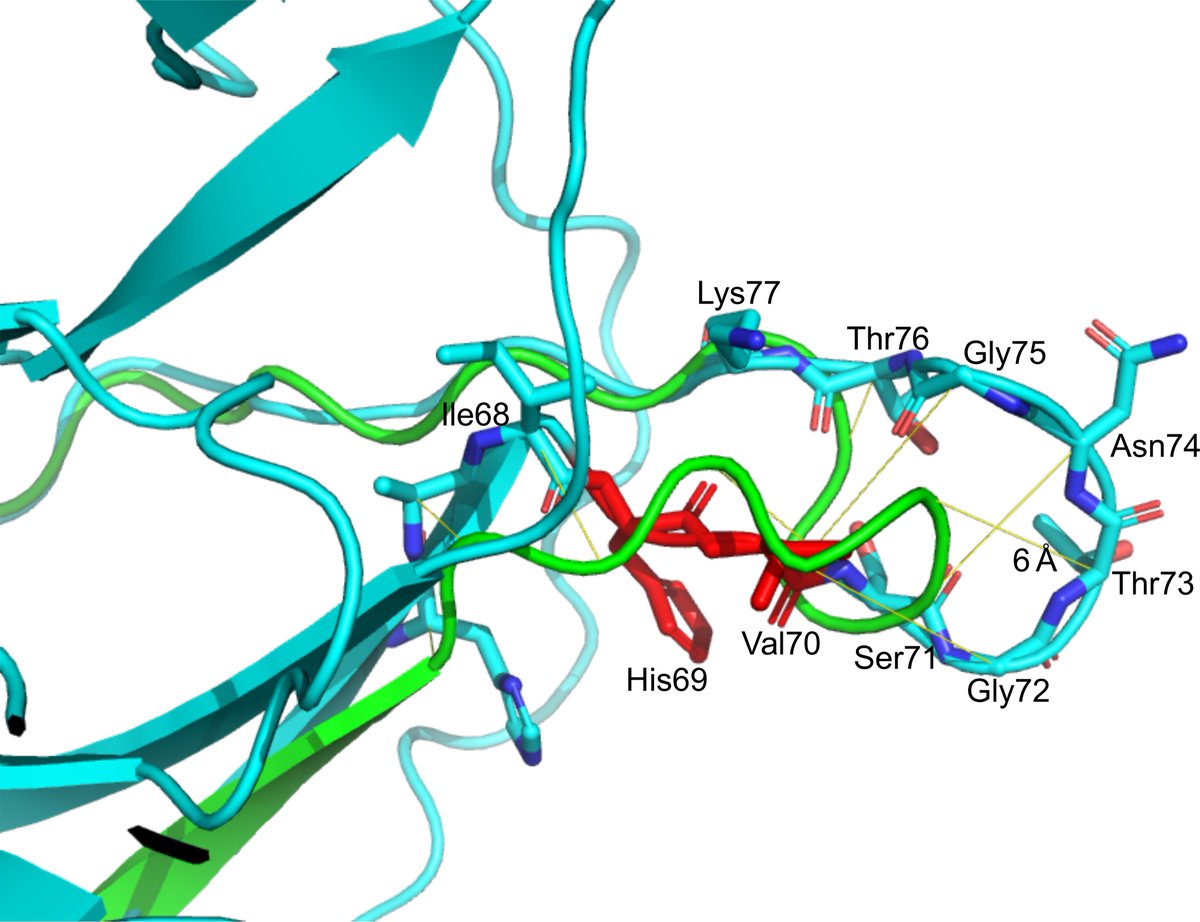B1.1.7 has more than 20 changes in genetic code, of which 8 are in the Spike protein (shown below). Spike is the target of many of our immune and vaccine responses. These changes can alter the shape of the spike, and that is why scientists are worried about viruses like this.
The numbers infected with B1.1.7 has been growing faster than other UK variants based on independent data sources. This variant of SARS-CoV-2 is therefore thought to be more transmissible by around 50%. Data suggest it does not lead to more severe illness however.
The N501Y mutation is in an important area called the receptor binding domain that interacts with our cells directly. N501Y has been reported to increase binding, though could play a role in avoiding antibodies. This mutation has formed clusters in a number of countries.
Two of the changes are deletions or loss of protein units that can change Spike shape. One is a deletion at 69/70 (red below)that we have seen in other clusters on its own and with other RBD mutations. In blue is the NTD and in green is the predicted post deletion structure.
The other deletion 144 overlaps a known antibody binding site, so could have been selected by antibody responses in a person. Of the remaining Spike mutations one is close to the RBD (570), and another (P681H) a cleavage site where cellular enzymes cut the Spike into two pieces.
These mutations could have occurred within a limited number of individuals before spreading and it is important to fully understand how they occurred. Our vaccines should be effective but we must limit transmission and further potential for mutations until they are delivered.

 Read on Twitter
Read on Twitter




